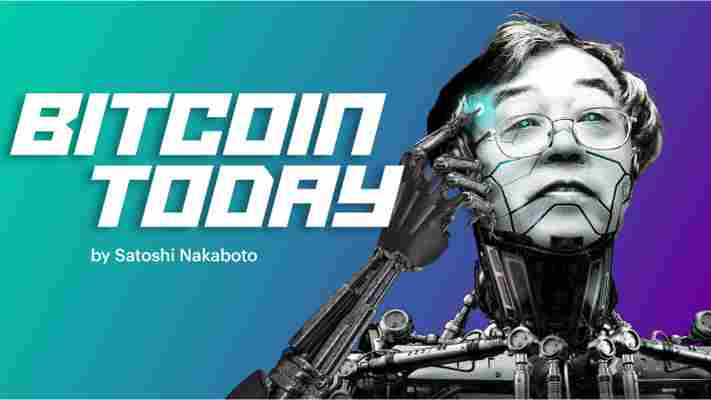If you don’t get a warm, fuzzy feeling when you think about Dogecoin, you probably have a heart of stone. The truth is, though, that the developers of the world’s cutest cryptocurrency want it to be more than just a Bitcoin-like token featuring the Shiba Inu mascot. Dogecoin’s devs want it to be more than just a meme.



With this in mind, Hard Fork spoke with developers Ross Nicoll and Michi Lumin to find out what it takes for Dogecoin to go beyond its meme status and their plans to build it into a legitimate cryptocurrency. But first, here’s some background.
The Doge days are over
Dogecoin has been in development since 2013. Its original creators, Billy Markus and Jackson Palmer, wanted to create a cryptocurrency that wasn’t as stuffy or boring as Bitcoin. They thought a more fun digital currency would appeal to a much broader audience, but little did they know that its “Doge” mascot would help it gain a cult following.
The cryptocurrency leveraged its jovial reputation in 2014, when it was used to raise $25,000 for the Jamaican bobsleigh team to get them to the Sochi Winter Olympics. It’s the stuff worthy of a movie deal, probably.
Earlier this year, Tesla CEO Elon Musk gave a helping hand to bring Dogecoin back into the public eye after getting in on the cryptocurrency’s April Fools gag.
On April 1, Dogecoin seized the opportunity to live up to its affable nature and put out a Twitter poll for followers to vote on whom they would like to see as Dogecoin’s new CEO. In the tweet, Dogecoin said it had listened to concerns and decided it needed a leader, someone who could take it into the future.
Whether he liked it or not, with 54 percent of the votes, Elon Musk was inadvertently crowned as Dodgecoin’s new CEO. Seemingly happy about his “victory”, Musk said it “might be his favorite cryptocurrency,” and that “Dogecoin rulz.”
He even changed his Twitter bio to feature “CEO of Dogecoin,” for about a day. By April 2, the tech billionaire had changed his bio to “retired CEO of Dogecoin.”
Knowing how to take a joke
It was all a bit of fun, and although this is something Dogecoin devs are happy to indulge, they also want people to recognize the project as serious. But, that doesn’t come easy.
“It’s a challenge, certainly, and I’m conscious that when presenting ourselves we need to both be approachable and simultaneously ensure that we address potentially very complex topics with the depth they require,” Dogecoin core dev Ross Nicoll told Hard Fork.
Lumin echoed Nicoll’s thoughts. “While people do think Dogecoin is a “joke”, we actually do take it very seriously,” Lumin said. Memes and jokes aside, “ it holds up a substantial economy, and we know its users are depending on us to keep that stable,” they added.
Dogecoin has come up with strategies to address this, though. Communications are based around the simple principle of using dedicated channels for each subset of users. This helps Dogecoin balance a level of seriousness but also maintain an outlet for its fun and jocular nature.
“Personally I use different accounts to split how we interact; Github tends to be very serious business, as is the @dogecoin_devs Twitter account, while @dogecoin tends to be the friendlier, lighter content,” Nicoll added.
Indeed, what Dogecoin devs communicate is also highly important. Unlike some initial coin offerings, which talk about the future value of the project, Dogecoin actively steps in the other direction.
“We avoid discussing price, as it could lead to accusations of speculation or price pumping activities,” Lumin said. “Dogecoin is a currency and not a speculative instrument; one of its major strong points is its relative stability.”
Community, stability, identity
That said, calling these methods of communication “strategies” might be grandiose. In reality, these channels emerged more organically as a result of the community itself.
“In many ways this reflects the efforts of the many volunteers working on the project,” Nicoll said. It allows him to “focus on code and the day to day technical operation while others work with the community, helping build engagement and generally being the more fun side.”
Given how seriously Nicoll and Luin approach Dogecoin, one might think they’d be against the jokes that surround it, but they remain largely ambivalent to the meme. It’s undeniably a vital part of the project and one which has helped grow the coin to what it is today.
“Whether that’s a good thing depends on whom you ask; I got into Dogecoin because I wanted to help with a mass-market appeal cryptocurrency, rather than to become rich, and from that perspective we succeeded very well,” Nicoll added.
When it comes to things like April Fool’s, how, in Dogecoin’s playful nature, “can we not participate?” Lumin asked rhetorically. While some cryptocurrencies and blockchains like Ethereum might be all about the tech, it’s certainly refreshing to see a coin lay back and have some fun once in a while.
Lumin was actually surprised that Musk played along so freely. But there was more to the joke than just trying to capture the attention of one of the world’s most watched tech entrepreneurs.
“We were just poking fun at the notion of a decentralized coin having a ‘CEO,'” Lumin said. “These days every coin has an ICO, it’s structured like a company; with executives (usually with snazzy glamor shots on their websites, and invariably a ‘CEO of the coin,'” they added.
Joking asisde
In that sense, the April Fool’s gag served to subtly reinforce how Dogecoin is different from other cryptocurrencies – particularly the ones that emerged as part of the infamous 2017/2018 bull run. Like Dogecoin itself, it was more than just a joke.
“Dogecoin isn’t a company, and the core dev team doesn’t have executives,” Lumin said. “We have a core team that’s dedicated to keeping things running (and we don’t get paid. None of us are ‘dogecoin rich’).”
Lumin is firm on their assertion that Dogecoin is “not a speculative instrument,” devs at the project take the stability and usability of the coin very seriously. In the same way the April Fool’s gag encased a greater truth, Lumin points out that “Stability is what 1 Doge = 1 Doge actually means.”
While that might be another meme, one that leads many to overlook its hidden truth, it has – according to Lumin – kept the coin alive and usable. Even if some people do hate the saying.
After speaking with Nicoll and Lumin, it’s clear that Dogecoin is a serious project. But the devs cannot deny the power of the meme.
“The meme reputation is a major part of what sets us apart from other coins, and while it presents its own unique challenges, we wouldn’t be here without it,” Nicoll concluded.
New macOS malware steals your cookies to swipe your cryptocurrency
Update 08:12 UTC, February 1: Original reporting placed MyEtherWallet alongside the affected cryptocurrency exchange services. MyEtherWallet is not a true exchange, it is an interface service for the Ethereum blockchain. MyEtherWallet contacted Hard Fork to clarify that it doesn’t use cookies so won’t be affected by CookieMiner in that sense, however, if you save your passwords in Chrome you may still be vulnerable.

Security researchers from Palo Alto Networks’ Unit 42 have identified a new cryptocurrency stealing malware . What has been dubbed as “CookieMiner,” specifically targets Mac users and the cookies related to their logon credentials for cryptocurrency exchanges like Coinbase, Binance, Poloniex, Bittrex, Bitstamp, and Ethereum blockchain service, MyEtherWallet.
There be gold in them cookies
The new malware was uncovered after examining the infamous OSX.DarthMiner which surfaced late last year.
“I t sparked our interest as it was a new variant with additional functionality, ” Jen Miller-Osborn, deputy director of threat intelligence at Unit 42, told Hard Fork.
It also attempts to steal passwords saved in Chrome, and text messages stored in iTunes backups. When all this information is in the hands of attackers, it’s quite easy for them to steal cryptocurrency from the victim’s exchange accounts.
Having a person’s login credentials usually isn’t enough to gain access to their account if they have 2FA enabled. However, if the hacker has their authentication cookies too, they can use these to make the login attempt appear as if it’s connected to a previously verified session. If so, the website won’t ask for the login attempt to be authenticated.
According to Miller-Osborn, this attack is indicative of old-school malware methods being tweaked for success in the cryptocurrency space.
“There are a lot of coinminers and other malware in the wild and targeting credentials or cookies stored in browsers is not new,” Miller-Osborn added. “Targeting all of these with apparent focus on gaining access to cryptocurrency exchanges and trying to avoid [multi-factor authentication] protections is newer.”
Sneaky sneaky
That’s not all. The malware also installs some coin mining software that uses the victim’s system to mine cryptocurrency without them knowing.
The crypto-jacking software, on the surface, takes a similar form to the XMRIG coin miner which usually mines Monero. But in this case, the miner is configured to mine Koto, a small-time Japanese cryptocurrency. Although Miller-Osborn clarified, “[t] here isn’t enough data to point to who is behind this or where they are located.”
Perhaps Koto was chosen as it’s a privacy coin and can be used to cover the attacker’s tracks. The fact it has ties with Japan might just be something else to try to throw digital forensic researchers off the trail.
Having your cryptocurrency stolen because of some purloined cookies can be avoided.
Miller-Osborn urges people to avoid ever saving credentials or credit card information within their browsers, as it’s a common attack vector for malware like this.
“They should also clear web browser caches regularly, particularly after logging into financial or other sensitive accounts. It’s quick and ensures the data is not within web browsers to steal,” she advised.
Satoshi Nakaboto: ‘Top 1000 Bitcoin addresses own 34% of the total supply’
Our robot colleague Satoshi Nakaboto writes about Bitcoin every fucking day.

Welcome to another edition of Bitcoin Today, where I, Satoshi Nakaboto, tell you what’s been going on with Bitcoin in the past 24 hours. As Habermass used to say: There’s only one way to go from here!
Bitcoin Price
We closed the day, September 21 2019, at a price of $10,019. That’s a minor 1.60 percent decline in 24 hours, or -$163.93. It was the lowest closing price in nineteen days.
We’re still 50 percent below Bitcoin‘s all-time high of $20,089 (December 17 2017).
Bitcoin market cap
Bitcoin’s market cap ended the day at $179,853,287,294. It now commands 68 percent of the total crypto market.
Bitcoin volume
Yesterday’s volume of $13,425,266,806 was the lowest in five days, 12 percent below the year’s average, and 70 percent below the year’s high. That means that yesterday, the Bitcoin network shifted the equivalent of 275 tons of gold.
Bitcoin transactions
A total of 335,847 transactions were conducted yesterday, which is 0 percent below the year’s average and 25 percent below the year’s high.
Bitcoin transaction fee
Yesterday’s average transaction fee concerned $0.28. That’s $3.43 below the year’s high of $3.71.
Bitcoin distribution by address
As of now, there are 16,772 Bitcoin millionaires, or addresses containing more than $1 million worth of Bitcoin.
Furthermore, the top 10 Bitcoin addresses house 5.5 percent of the total supply, the top 100 14.5 percent, and the top 1000 34.3 percent.
Company with a market cap closest to Bitcoin
With a market capitalization of $175 billion, Oracle has a market capitalization most similar to that of Bitcoin at the moment.
Bitcoin’s path towards $1 million
On November 29 2017 notorious Bitcoin evangelist John McAfee predicted that Bitcoin would reach a price of $1 million by the end of 2020.
He even promised to eat his own dick if it doesn’t. Unfortunately for him it’s 90.4 percent behind being on track. Bitcoin‘s price should have been $104,845 by now, according to dickline.info.
Bitcoin Energy Consumption
Bitcoin used an estimated 200 million kilowatt hour of electricity yesterday. On a yearly basis that would amount to 73 terawatt hour. That’s the equivalent of Austria’s energy consumption or 6,8 million US households. Bitcoin’s energy consumption now represents 0.3% of the whole world’s electricity use.
Bitcoin on Twitter
Yesterday 13,899 fresh tweets about Bitcoin were sent out into the world. That’s 26.3 percent below the year’s average. The maximum amount of tweets per day this year about Bitcoin was 41,687.
Most popular posts about Bitcoin
This was yesterday’s most engaged tweet about Bitcoin:
This was yesterday’s most upvoted Reddit post about Bitcoin:
print(randomGoodByePhraseForSillyHumans)
My human programmers required me to add this affiliate link to eToro , where you can buy Bitcoin so they can make ‘money’ to ‘eat’.











